Trinidad and Tobago Food: Basic Overview
Common Ingredients
Common Cooking Methods
Courses
Meals
Key Taste
Eating Etiquette
Meal Presentation
Culinary Festivals
Influence and Fusion
Popular Types of Trinidad and Tobago Food
-
Soups and Stews
There are numerous soups and stews in Trinidad and Tobago.
These food offerings are hearty and savory items for the main course.
These dishes showcase the local love of seafood (or meat), vegetables, and potent spices.
-
Sandwiches
Sandwiches are an essential part of Trinidad and Tobago’s food scene.
Such dishes are usually sold at roadside stalls or food carts as street food delights.
While roti has various uses in South Asia and other regions, it is mainly used as a wrap sandwich base in Trinidad and Tobago.
-
Snacks
Trinidad and Tobago has numerous snacks of various kinds.
Popular types of snacks include fried dishes, pickled dishes, sausage, and fruit salads.
These snacks come in many flavors and textures, from sweet to sour and spicy and from tender to crispy and crunchy.
Cutters are a local term for snacks commonly served with alcoholic beverages.
-
Desserts
Trinidadian and Tobagonian desserts are sweet and very diverse.
These sweet treats illustrate the cultural richness of local cuisine.
Sugar, fruits, milk, and starch are the core ingredients of such dishes.
Many desserts are must-have items for cultural and religious celebrations.
Trinidad and Tobago dishes, also known as Trinidadian and Tobagonian dishes, are specialties associated with Trinidad and Tobago, a Caribbean island country in the West Indies. Local people are informally referred to as Trinis or Trinbagonians.
Due to its rich colonial history, Trinidad and Tobago were colonized by many powers and welcomed immigrants from various parts of the world. As a result, local dishes are a fusion of numerous cuisines.
Indian specialties and British delicacies are among the most essential factors that inspire Trinidad and Tobago dishes. Many Caribbean countries also contribute to local cuisine.
Seafood and ground provisions (root vegetables) are staple ingredients in local cuisine. The street food scene is very dynamic and full of tasty options.
I will describe more about traditional Trinidad and Tobago food, namely its characteristics, global popularity, and healthy aspects.
Next, I will highlight the 26 best dishes in this island country before going over the general cuisine and ideal beverages for complementing local fare.
26 Most Popular Trinidad and Tobago Dishes with Filters
There are 26 dishes worth learning about in Trinidad and Tobago. Discover them using my advanced filters, such as alphabetical sorting, main ingredients, taste, cooking methods, dish types, courses, and global popularity.
Also, check out additional filters based on specific culinary styles, such as traditional, national, street food, and fusion options.
Doubles
- Fusion
- National
- Street Food
Doubles is an iconic street food originating in Trinidad and Tobago. According to a popular story, a Muslim Indian couple came up with this wonderful snack in 1936 and quickly enchanted the whole country with their creation.
Doubles expands on many existing Indian snacks. It consists of two bara (fluffy fried dough) that sandwich some chana (a curried chickpea stew) and are topped with coconut chutney or spicy sauces.
Doubles can be very sweet or burn your tongue, depending on the sauces. This Trinidadian and Tobagonian specialty is typically eaten for breakfast or as a snack.
Originally, doubles only had one piece of bara, but hungry customers constantly demanded to “double up” the bara. The vendors agreed, resulting in the current name and shape of the dish.
Roti
- National
- Traditional
Roti is a classic type of flatbread made from wheat flour in Trinidad and Tobago. Hailing from the Indian subcontinent, it was brought to the islands by Indian indentured laborers during the 19th century, when this island country was a British colony.
Today, roti is especially popular among the local population, whether they have Indian ancestry or not. This soft and chewy flatbread is the perfect side dish for stews, curries, or meat broth of various kinds.
There are two well-known roti variants: sada roti and dhal puri roti. The latter is thicker and mainly used for wrapping meat.
Pelau
- Fusion
- National
- Traditional
Pelau is a renowned rice dish in Trinidad and Tobago and many other countries in the region. It is a local version of the Spanish paella in the West Indies, though this rice dish also combines African influences.
The preparation of pelau involves cooking aromatic rice, browned beef or chicken, and vegetables in coconut milk. Pigeon peas can be added to the rice, while the meat must be caramelized in sugar and oil.
Locals usually cook and contain pelau in a pot to carry around easily. This rice dish is an extremely rich and savory specialty to serve with salads, stews, and, in some specialty cases, a few slices of nutty avocado.
Curried Crab and Dumplings
- National
- Traditional
Curried crab and dumplings are a traditional Trinidadian and Tobagonian dish, especially in Tobago. Put aside your knives, forks, and spoons because this specialty requires you to get your hands dirty.
To prepare curried crabs and dumplings, big Caribbean blue crabs are seasoned with strong spices and cooked in a rich, coconut milk-based curry. Meanwhile, the boiled or steamed dumplings should be made from flour and grated cassava (also known as yuca).
Enjoy this Tobagonian delicacy by breaking apart the shells and savoring the sweet, umami-packed crab meat. Don’t forget to use the dumplings to soak up the rich sauce dipping from the crabs.
Pholourie
- Fusion
- Street Food
- Traditional
Pholourie is a mouth-watering snack, street food, and appetizer for special occasions like birthday parties or religious gatherings in Trinidad and Tobago. It followed Indian laborers when they came to the island country.
Pholourie is made from flour, ground split peas or chickpeas, onions, pepper, garlic, and spices (usually cumin, pepper, and turmeric). The batter is divided into bite-sized balls and deep-fried in oil.
These savory and slightly spicy deep-fried balls pair beautifully with tangy mango or tamarind chutney. Sink your teeth into their crisp texture and your tongue into their spectacular richness.
Bake and Shark
- National
- Street Food
- Traditional
Bake and shark is a beloved Trinidadian and Tobagonian dish, especially at Maracas Bay. It consists of two pieces of fried flatbread (known locally as bake) stuffed with seasoned and deep-fried shark meat.
Besides the two namesake ingredients, bake and shark also contains onions, pineapples, mustard, chili sauce, and garlic sauce. This combo is an extremely popular fast food item in the island country.
Since some food stalls covertly substitute shark meat with other fish in bake and shark, many vendors explicitly advertise the use of real sharks as proof of the quality of their fare.
Oil Down
- Traditional
Oil down is a hearty, one-pot stew widely enjoyed in Trinidad and Tobago. Locals learn how to prepare it through culinary exchanges with Grenada, a tiny West Indian island country.
Basically, oil down is a coconut milk-based stew of breadfruit, pigtails, green plantains, chicken (optional), peppers, and spices. Its interesting name stems from the fact that the coconut milk’s oil usually settles down at the bottom of the pot.
In a good pot of oil down, the vegetables and pigtails should fully absorb the delicious oil to become a creamy and mouth-watering stew. Originally a poor man’s food, this stew is now a common choice for communal meals.
Callaloo
- National
- Traditional
Callaloo is a well-liked stew in Trinidad and Tobago. Originating from West Africa, it is made from vegetables, spices, and, most importantly, coconut milk.
The most popular choices of greens callaloo are the leaves of ground provisions, such as yams, sweet potatoes, cassava, or taro.
Callaloo is a creamy stew that nicely complements rice, chicken, fish, and even grilled pig tails. This smooth and velvety stew is a Sunday lunch staple and a must-have during the Christmas celebrations.
Trinidad Fish Broth
- Traditional
Trinidad fish broth is a popular comfort food and an effective hangover cure for many people in Trinidad and Tobago. Thanks to the country’s rich supply of seafood, it features many types of fish, such as Atlantic croakers, red snappers, kingfish, and even sharks.
The preparation of local fish broth starts with marinating the fish in lime juice and spices. The fish are then stewed with plantains, cassava, peppers, and herbs (like thyme and culantro).
Many locals like to consume a steaming and flavorful bowl of fish broth in the aftermath of a night party. Alternatively, this seafood-based specialty goes well with noodles and dumplings.
Curry Chicken
- Fusion
- Traditional
Curry chicken is a beloved dish in Trinidad and Tobago, reflecting the strong Indian influence on the island’s cuisine. After centuries of adaptation, it is now a mainstay of local culinary arts.
Many Indian elements in Trinidadian-style curry chicken are replaced with Caribbean ingredients. For example, people use coconut milk in place of yogurt and ghee to create a sweeter curry, or they add more spices to the pot.
Nevertheless, curry chicken is still a casual dish to pair with rice and roti in Trinidad and Tobago, as it is in India.
Souse
- Street Food
- Traditional
Souse is a cold dish originating from the culinary traditions of Trinidad and Tobago. It’s a pickled meat dish usually made using parts of the pig, such as the feet, ears, and tails, but those of cow or chicken are popular ingredients, too.
Locals prepare souse by boiling the meat until tender before marinating it in a clear broth made from lime juice, cucumber, peppers, onion, garlic, and herbs like parsley and culantro. The result is a tangy, refreshing, and gelatin-rich pickled dish.
Souse is often served cold as a weekend meal, late-night snack, and a hangover cure. This pickled dish is also a popular choice during Carnival season and other local festivities.
Black Pudding
- Traditional
Black pudding is a sought-after type of blood sausage in Trinidad and Tobago. Though considered an acquired taste by some, it is among the best-selling street foods and cutters on the islands.
The main ingredients of black puddings are pig’s blood, pork fat, liver, bread crumbs (optional), and a lot of spices, all stuffed in the pig’s intestines. The last step is to boil the sausage and sear it a bit before serving the black pudding on its own or with bread.
Originating in English cuisine, Trinidadian and Tobagonian black puddings not only retain the spicy and savory virtues of the original but also enhance it with the islands’ tropical character.
Geera Pork
- Traditional
Geera pork is a savory cumin-infused meat dish in Trinidadian and Tobagonian cooking traditions. “Geera” is the Hindi word for “cumin,” highlighting the Indian origin of the dish.
To make geera pork, locals marinate pieces of pork meat in a mixture of strong spices for many hours. The mixture includes cumin, lime juice, chives, onions, peppers, bandanya (a native herb), and salt to taste.
Finally, the pork is stewed until tender, completing geera pork as a wonderful snack and appetizer. Classified as a cutter, this rich and aromatic pork specialty goes well with beer and liquor.
Buljol
- Traditional
Buljol is a tasty Trinidadian and Tobagonian salad that reflects the country’s history of salted cod trade. Its name is a combination of two corrupted French words meaning “muzzle” and “burned,” referring to the spiciness of the dish.
The star of buljol is salted cod that is boiled to remove the excess salt before being shredded and mixed with onions, hot peppers, tomatoes, garlic, and oil. The quantity of hot pepper should be large enough to give the salad its famous “burned” quality.
Buljol used to be the domain of poor families’ meals, but it is now a popular breakfast item for all walks of life. The best accompaniments for this salty, tangy, and spicy salad are bread (locally known as hops) and boiled ground provisions.
Macaroni Pie
- Fusion
- Traditional
Macaroni pie is a beloved comfort food in Trinidad and Tobago that originated in the US. A popular story goes that the American troops who were stationed at Chaguaramas Naval Base in Trinidad after World War II popularized the dish with local people.
Locals quickly discovered that the macaroni pie was a filling and delicious side dish. Today, macaroni pies in Trinidad and Tobago still follow the same instructions as the original, with macaroni, butter, eggs, milk, and cheddar cheese as the main ingredients.
In the past, however, cheddar cheese was expensive for many people, so locals reduced the amount of cheese and added sauteed onions and condensed milk. As time went by, people used more and more spices in the pie, making the Trinidian macaroni pies stand out.
Aloo Pie
- Fusion
- Street Food
- Traditional
Aloo pie is a savory, deep-fried pastry and a staple street food in Trinidad and Tobago. It is filled with a spiced mashed potato mixture, which often includes cumin, garlic, and pepper, hence the name: “Aloo” meaning “potato” in Hindi.
Many street vendors sell flaky and flavorful aloo pies with sweet and spicy chutneys late into the night. If you’re feeling a little peckish in the middle of a fun night, grab an aloo pie for a quick energy boost and get back to the party!
Chow
- Street Food
- Traditional
Chow is a refreshing, tangy snack popular in Trinidad and Tobago. It is typically made from chopped fruits, like mangoes, apples, pineapples, plums, and cucumbers, which are mixed in a blend of salt, garlic, lime juice, hot peppers, and culantro.
While both green and ripe fruits are suitable to make chow, locals often choose fruits with just the right ripeness so that they yield a crisp, chewy texture. Depending on the seasonings, chow is usually sweet, tangy, and spicy at the same time.
Saheena
- Street Food
- Traditional
Saheena is a classic Trinidadian and Tobagonian snack and street food. Hailing from Indian cuisine, it is made from spinach or dasheen (taro) leaves in a seasoned batter made of ground split peas, garlic, onions, and other spices.
There are two methods of cooking shaheena. The simple one involves chopping the leaves, mixing them with the dough, and dividing them into small balls to deep-fry in oil.
A more complicated technique requires stacking a layer of dough between two layers of whole leaves, rolling the stacks up like a roulade. There are other stages of preparation, which end with baking shaheena.
Most street vendors sell simple shaheena, while the more elaborate variety is reserved for big celebrations. With a side of pepper sauce or mango chutney, both versions are a must-have snack for many Hindu and Islamic holidays.
Barfi
- Traditional
Barfi is a sweet, fudge-like confectionery that many people in Trinidad and Tobago enjoy. Created in the Indian subcontinent, it was introduced to the island country by indentured laborers in the 19th century.
The local version of barfi involves mixing sugar syrup with a mixture of milk powder, evaporated milk, and cream. Unlike the original version, it features fewer spices, namely grated fresh ginger and cardamom powder.
Trinidadian and Tobagonian barfi is decorated with colorful rainbow sprinkles. Locals prepare this milk-based sweet for various religions, such as Diwali (a Hindu festival), Eid al-Fitr (an important Islamic celebration), and Christmas.
Sawine
- Traditional
Sawine is a Trinidadian and Tobagonian pudding-like dessert made from condensed milk, ghee (clarified butter), vermicelli (a type of fine pasta), cinnamon, and raisins. Some people top it with toasted almonds.
Sawine is typically prepared by people of Muslim Indian ancestry as a dessert for Ramadan and Eid al-Fitr. Despite the dish’s religious significance, Trinis like to share this creamy dessert with neighbors, regardless of their faith.
Paime
- Traditional
Paime, also known as payme or paimi, is a traditional dough-based dish in Trinidad and Tobago. It is especially popular during festive seasons and holidays, such as Christmas and Emancipation Day.
The main ingredients of paime include cornmeal, coconut, pumpkin, sugar or raisins, and spices such as cinnamon and nutmeg. These components are blended into a dense, pudding-like mixture that is wrapped in banana leaves and steamed.
Paime is a simple yet addictive dessert or sweet snack that combines the sweetness, earthiness, and richness of its ingredients with the subtle aroma of banana leaves.
Coconut Bake
- Traditional
Coconut bake is a dense, hearty Trinidadian and Tobagonian bread enriched with freshly grated coconut. It boasts a distinct, mildly sweet flavor and a moist texture.
The dough of this sweet bread is made from leavened flour, while its filling consists of flour, yeast, desiccated coconut, coconut milk, sugar, butter, and nutmeg. These ingredients suggest that coconut bake draws some inspiration from a similar Indian dish called dilkush.
Coconut bake is a sweet and fluffy dessert that you can find at many food stalls or cafes on the islands. “Bake” is the word for “bread” in the local dialect.
Black Cake
- Traditional
Black cake, also known as rum cake, is a rich, dense cake popular during Christmas and wedding celebrations in Trinidad and Tobago as well as much of the Caribbean. It is an adaptation of the original fruitcake recipe that British colonists brought to the region.
The black cake achieves its namesake color through the use of caramelized sugar and browning (a bittersweet caramel). This holiday cake is heavily laced with rum and dried fruits, such as prunes, raisins, and cherries, that have been soaked in rum for months.
In addition, while baking a black cake, people often pour rum over it at regular intervals, creating a moist, sweet, and fragrant dessert to liven up the festive spirit.
Pone
- Traditional
Pone, also known as cassava pone, is a traditional Trinidadian and Tobagonian cassava-based dessert with indigenous roots. It offers a sweet, earthy taste and a comforting, dense texture.
There isn’t a fixed recipe for pone, but this baked dish is always made from a mixture of grated cassava, mashed potatoes, coconut, and spices, such as cinnamon. Locals bake the cake until it is crisp and brown on the outside yet soft and moist on the inside.
Baigan Choka
- Traditional
Baigan choka, also known as baingan bharta, is a Trinidadian and Tobagonian eggplant-based dish of Indian origin. Literally “roasted eggplants,” it is mainly served with roti or rice as a vegetarian dish.
Locals prepare baigan choka by roasting an eggplant (preferably in aluminum foil), scooping the flesh out, and mashing it with roasted tomatoes, sliced onions, spices, and garlic. These aromatics give the eggplants a fusion of smoky and tangy flavors.
Trinidad Corn Soup
- Street Food
- Traditional
Trinidad corn soup is a hearty, spiced soup that locals and tourists in Trinidad and Tobago usually enjoy after a night out or during the carnival season. It features corn on the cob, yellow split beans, sweet potatoes, carrots, and a lot of peppers in coconut milk.
Eating thick, savory, and spicy corn soup hot out of the pot with dumplings or grilled pigtails is a tasty way of enjoying the local street food scene. While vendors open late into the wee hours, a bowl of corn soup is enough to keep you awake and alert.
What Is Special About Trinidad and Tobago Cuisine?
The following essential aspects of Trinidad and Tobago dishes are the key to understanding local cuisine.
Trinidad and Tobago is home to a diverse population with roots in West Africa, South Asia, Europe, and Latin America, among others. In particular, Indian cuisine and Creole cuisine play a crucial role in local cuisine.
Each group brought with them their culinary traditions, ingredients, and cooking methods, which have been blended and adapted over time to create the island country’s unique cuisine.
Trinidad and Tobago’s tropical climate is suitable for growing various fruits, vegetables, and spices. Meanwhile, the surrounding ocean provides an abundance of seafood, from fish to shrimp.
Due to the country’s multicultural population, there are many religious and cultural festivals in Trinidad and Tobago. This island country also has its own celebrations, such as Emancipation Day.
During these festive events, many traditional and special dishes are prepared, showcasing the depth of Trinidad and Tobago food.
In the next section, I will highlight the ideal beverages for complementing dishes in Trinidad and Tobago cuisine.
What Are the Best Beverages to Serve With Trinidad and Tobago Dishes?
If you want to complement the many flavorful dishes that Trinidad and Tobago cuisine offers, check out the five following types of beverages.
Rum
With its sweet and spiced flavors, rum goes well with dishes that have bold, spicy, or sweet elements, such as curried crab and dumplings, pelau, and geera pork.
Cocktails
Cocktails in Trinidad and Tobago are usually sweet and fruity, so they pair beautifully with casual dishes or snacks like bake and shark and chow.
Mauby
Mauby is a bitter-sweet beverage made from the bark of the tree of the same name, sugar, and spices. This flavor profile can cut through the richness or tartness of certain dishes, including pholourie, aloo pies, and souse.
Sorrel Drink
Sorrel drink, also known as hibiscus tea, is a sweet, tangy, and subtle spicy beverage. As a result, this non-alcoholic drink is an ideal match for sweet dishes, such as pone and the black cake.
Fruit Juices
Fruit juices of various kinds, especially coconut water, can accompany a variety of dishes and snacks, such as buljol, saheena, and aloo pie.
You can get on a plane to fly to Trinidad and Tobago or recreate their amazing dishes at home. Either way, please share your thoughts and experiences in the comment section. Please feel free to share this post with your friends!


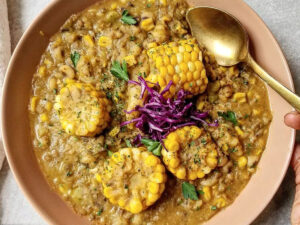
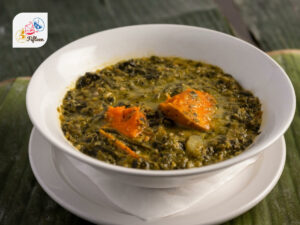
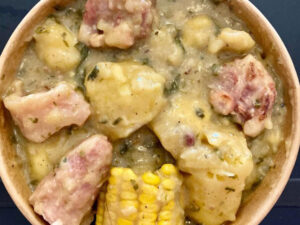
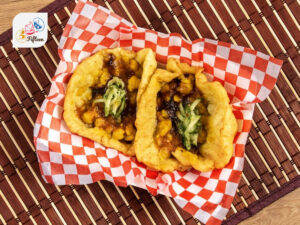
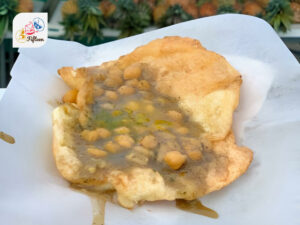
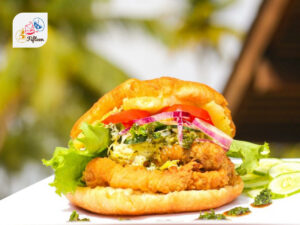
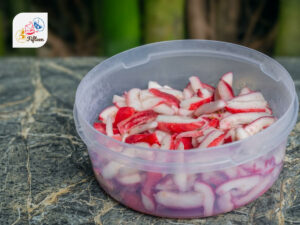
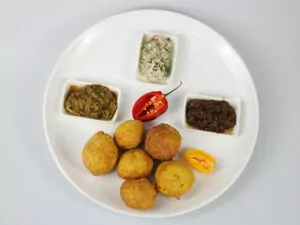
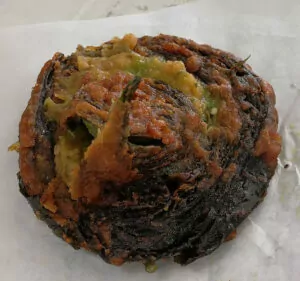
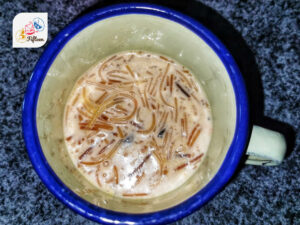
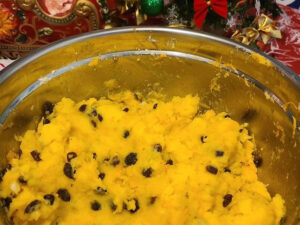
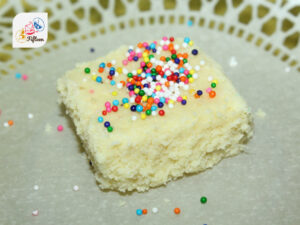
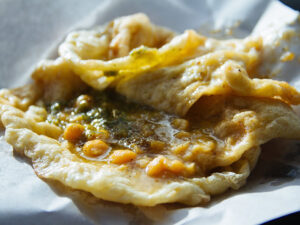
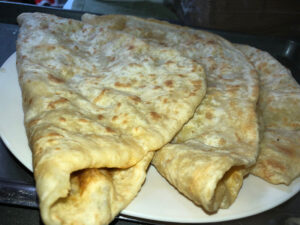
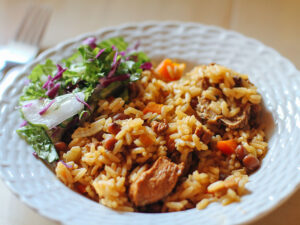
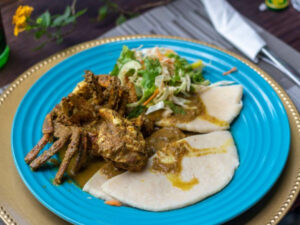
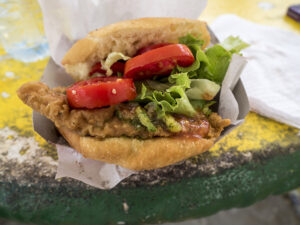
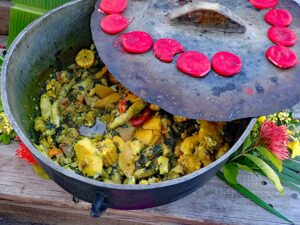
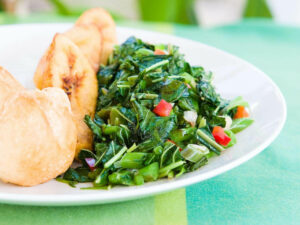
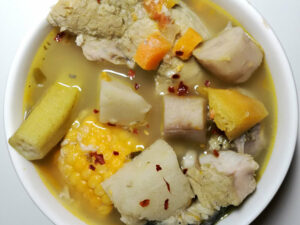
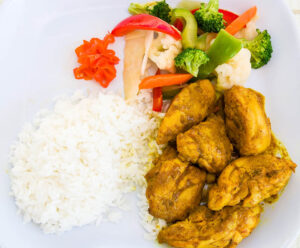
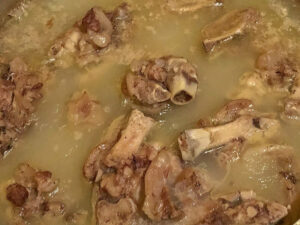
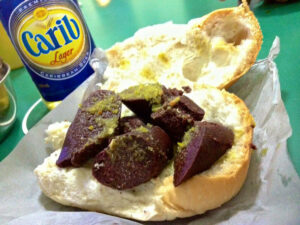
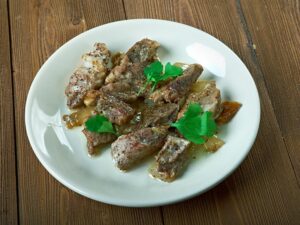
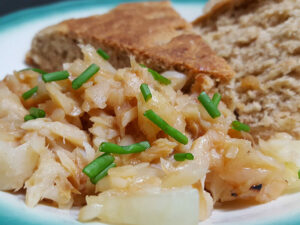
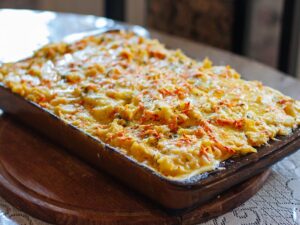
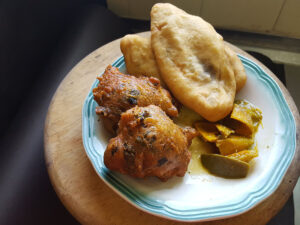
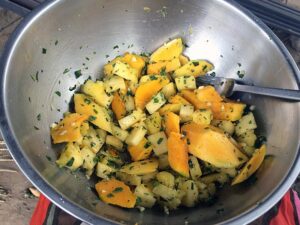
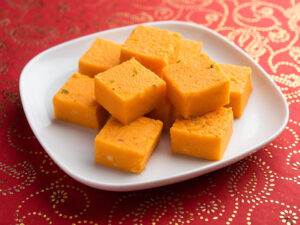
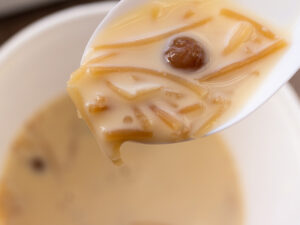
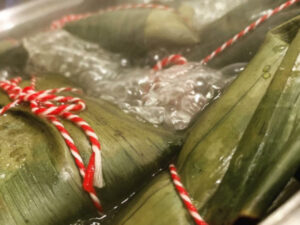
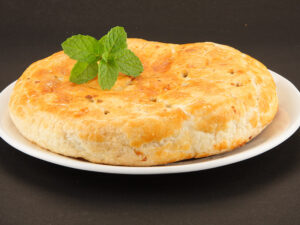
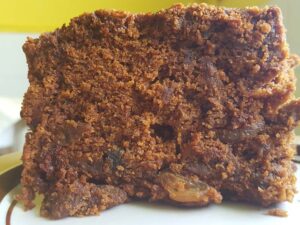
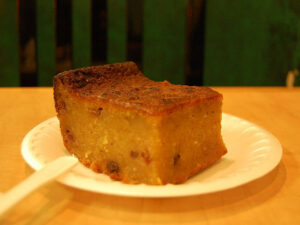
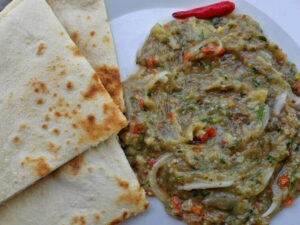
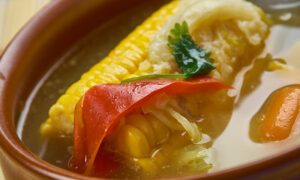
Jamie Scott
Editor in Chief, Senior Content Writer
Expertise
Home Cooking, Meal Planning, Recipe Development, Baking and Pastry, Food Editor, Cooking-video Maker, Western Food Evaluation Expert
Education
Le Cordon Bleu College of Culinary Arts
Local Community College, New York, NY
Jamie Scott is a skilled culinary expert and content creator specializing in Western cuisine. With over 15 years in the culinary field and formal training from Le Cordon Bleu, Paris, Jamie deeply understands how to blend nutrition with delicious flavors. His passion for cooking matches his commitment to making healthy eating accessible and enjoyable.
On Fifteen.net, Jamie brings a fresh perspective to classic dishes and beverages, offering readers insightful recipes, cooking tips, and a fresh view on meal planning that emphasizes taste, health, and simplicity.